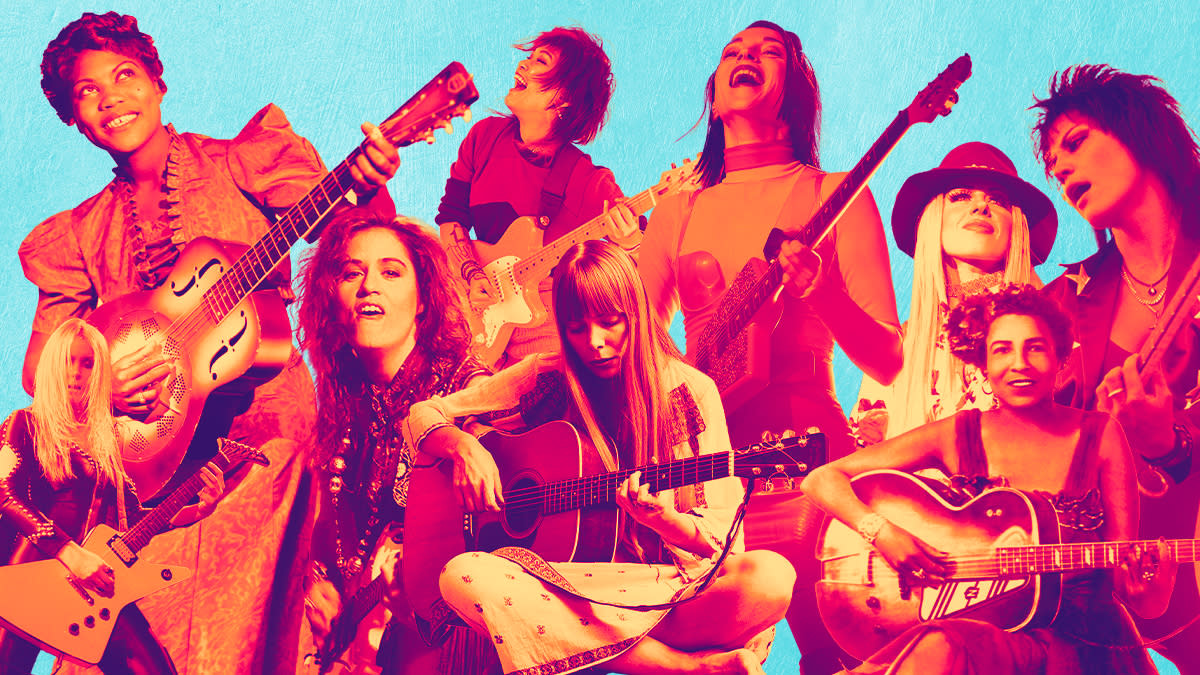New study reveals how female guitarists have been denied credibility in the music press for over 60 years

- Oops!Something went wrong.Please try again later.
- Oops!Something went wrong.Please try again later.
- Oops!Something went wrong.Please try again later.
Where are all the great female electric guitarists? Not in music magazines, according to new academic research published in the Journal of Popular Music Studies.
The study, conducted by guitarist and MA student Isabella Fincher, analyzes coverage of 43 influential female guitarists between 1959 and 2023 in 10 established American press outlets. It includes pioneering players like Joni Mitchell, Bonnie Raitt, St. Vincent, Joan Jett, Sister Rosetta Tharpe and Memphis Minnie.
According to the study, 16.3% didn’t appear in a single article. 46% were mentioned in fewer than 10 articles – and often cited in connection with their work with a well-known male artist, such as Orianthi with Michael Jackson, Lady Bo with Bo Diddley, and Carmen Vandenberg with Jeff Beck.
It should be noted that while, historically, guitar publications, including Guitar World, have likely been no exceptions to this trend, this particular study has limited its focus to mainstream music and news titles such as The New Yorker, NPR, and Rolling Stone.
Black female guitarists, in particular, tended to get even less press coverage. 27.9% guitarists in the study are Black women. Yet they were only featured in 10.6% of the articles analyzed.
Sister Rosetta Tharpe, the electric blues pioneer and Godmother of rock and roll who inspired everyone from Eric Clapton to Keith Richards, was only praised in 29 of these articles posthumously. According to Fincher’s study, none of these major publications wrote anything about her while she was still alive.
In her analysis, Fincher proposes that these players have been the subject to a set of double standards rooted in long-running masculine stereotypes around the electric guitar and rock music.
Fincher writes that male electric guitarists are typically perceived as mythological god-like figures. Their over-the-top performances, with shocking gestures and over-exaggerated facial expressions, are key to their fans worshipping them as their heroes.
On the other hand, women are chastised for similar performances. Most notably, a 1989 Rolling Stone article criticized Vicki Peterson of The Bangles for “relying heavily on cliched Moves R Us poses” and “playing guitars in a Pete Townshend-like windmill motion.”
In addition, many of these guitarists have often been framed as novelty acts and exceptions, or depicted as female versions of male stars.
For instance, the study notes Orianthi has routinely been described in the press as a “female Slash”, “female Carlos Santana” and “female guitar hero”. In a live review of The Runaways, Lita Ford was described by a Los Angeles Times critic as “a girl guitarist [that] can play [as] authoritatively and obnoxiously as the boys.”
In a New York Times article from 1971 about the band Fanny, the writer posits: “a Four-Girl Rock Group, Poses a Challenge to Male Ego. Going to see an all-girl rock group, one has to bring a mixture of condescension and paranoia. What if they are good?”
The study evidences what has long been considered the anecdotal experience of many non-male guitarists.
In 2024, gender inequality remains a clear issue in the music industry, particularly in the guitar scene. Fender research revealed in 2018 that 50% of all beginner and aspirational guitar players are women – yet only 6% of all signature electric guitars were designed by women and non-binary artists, despite demand for female and non-binary artists' signature guitars outstripping supply. The relative lack of publicity from the mainstream music press may have contributed to these statistics.
On the music press side, meanwhile, inequality is slowly being addressed. For instance, Fincher notes that of the articles in the study that were published between 2020 and 2023, 41.3% of them were written by women.
Fincher suggests that to continue to address these systemic inequities, the music press must actively feature more female guitarists from all across the board, especially women of color.
Moreover, Fincher stresses that it's necessary to go beyond gendered categories and markers, such as “women in guitar”, as well as their hyper-sexualization, as this excludes, rather than includes, women from serious consideration.
Fincher concludes that, by challenging the stereotypes of rock culture, female guitarists embody the values and ethos that we associate with rock 'n' roll in the first place.
The full study is available at University of California Press.

